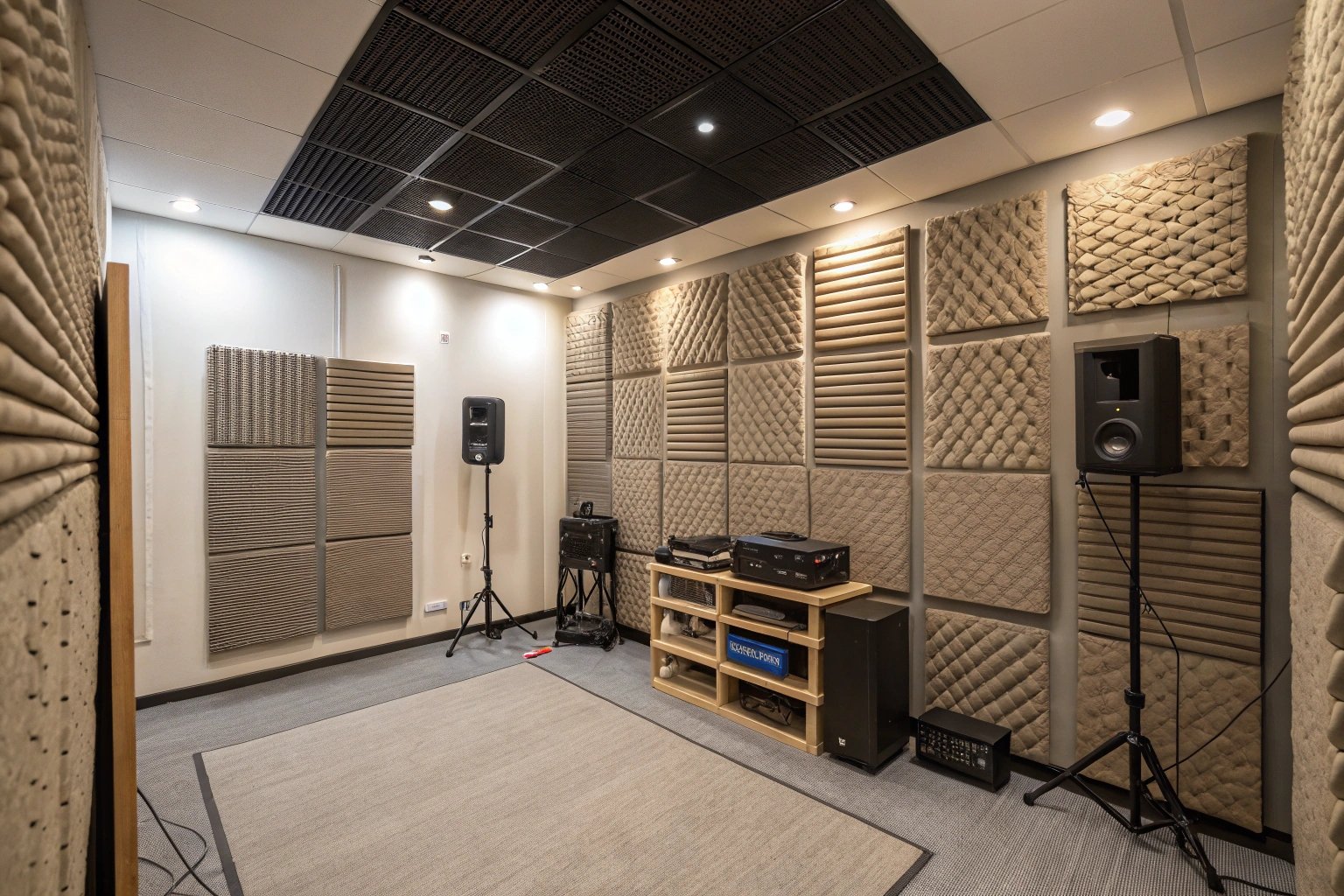Noise is more than a nuisance—it’s a productivity killer and a design flaw. Whether in open offices, recording studios, or upscale commercial interiors, echo and reverberation can ruin both experience and functionality. As a fabric manufacturer rooted in Keqiao, we know the right textile can make or break acoustic panel performance.
Acoustic fabric is not about aesthetics alone—it directly influences sound absorption, flammability compliance, air permeability, and longevity of panel life.
This guide will help buyers, designers, and sound engineers make better decisions when selecting fabrics for noise control panels. Drawing from our experience supplying acoustic textiles to global clients, we’ll compare the best sound-absorbing fabrics, explain test standards, and break down key sourcing factors.
Which Fabric Properties Make a Material Good for Sound Absorption?
Choosing the right fabric starts with understanding how sound works. Acoustic panels absorb sound waves that would otherwise bounce off hard surfaces. But if the fabric covering the panel is too dense or reflective, it blocks sound from reaching the absorbent core.
The ideal fabric for sound absorption must be acoustically transparent, breathable, and have a non-reflective surface.
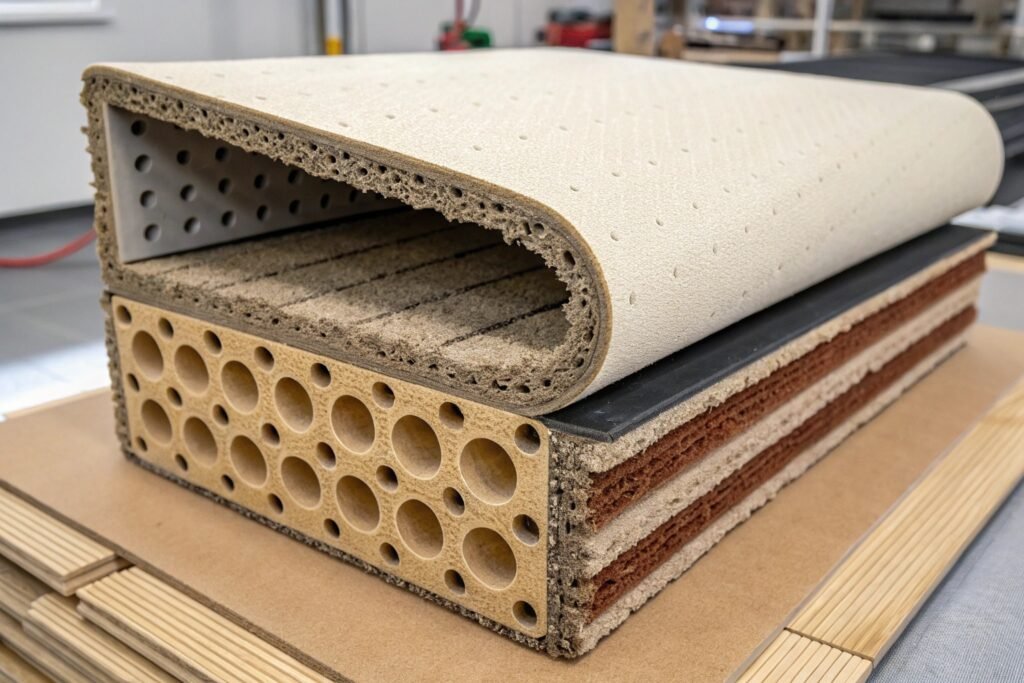
What Does “Acoustically Transparent” Mean in Fabric Terms?
Acoustic transparency means the fabric lets sound waves pass through without significant reflection. This is usually achieved with open-weave or knitted structures that allow air—and thus sound—to penetrate. Acoustics First provides a useful breakdown of how weave type affects this.
We recommend fabrics with high air permeability (measured in mm/s) and NRC (Noise Reduction Coefficient) tested > 0.8 when used with appropriate backings. You’ll often find polyester mesh, acoustic wool, or Trevira CS materials in professional applications.
Why Is Air Permeability a Key Metric for Acoustic Fabric?
Air permeability ensures that sound waves don’t bounce off the surface. Instead, they pass through the fabric into the sound-absorbing foam or fiberglass. At Fumao Fabric, we regularly test permeability in our CNAS-certified lab using ISO 9237 standard.
According to Camira Fabrics, a minimum airflow resistance of 1.5 kPa·s/m² is ideal for most commercial acoustic panels. Our recycled polyester acoustic mesh offers high breathability and sustainable appeal.
What Are the Top Fabrics Used for Acoustic Panel Applications?
Once you understand the science behind sound absorption, choosing the right fabric depends on budget, look, and location. Whether you're outfitting a podcast studio or a hotel ballroom, the best acoustic fabrics balance performance and aesthetics.
Common acoustic panel fabrics include wool serge, recycled polyester mesh, velvet, burlap, and Trevira CS. Each serves a different acoustic and design need.
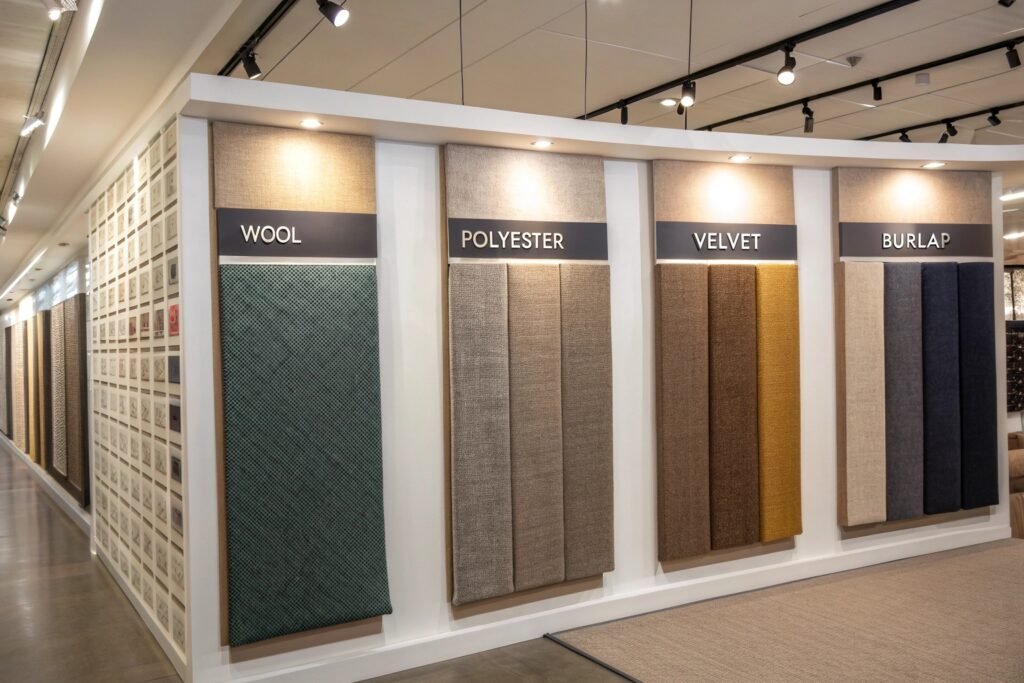
Why Is Wool Serge Still Popular for Acoustic Wall Coverings?
Wool serge is a dense, flame-retardant, and naturally sound-absorbent fabric. It has been a long-time standard in theaters and auditoriums due to its rich texture and acoustic performance.
According to RoseBrand, wool serge has excellent NRC values (>0.85) and passes NFPA 701 fire safety standards. At Fumao, we’ve developed a wool-poly blend alternative for clients needing better pricing without sacrificing performance.
How Do Recycled Polyester Mesh Fabrics Compare?
For a modern look, mesh fabrics made from rPET (recycled polyester) offer durability, transparency, and environmental compliance. They are light, customizable, and can be printed or dyed easily.
Our eco-acoustic mesh fabrics are engineered to meet OEKO-TEX® 100 standards and perform well on ISO 354 acoustic tests. Guilford of Maine is another leading brand offering similar polyester-based options.
What Testing Standards Should Acoustic Fabrics Meet?
The performance of any acoustic panel fabric must be backed by verifiable testing data. In our factory, we adhere to both Chinese GB standards and global testing protocols like ASTM and ISO.
Key tests for acoustic fabrics include NRC, ASTM E84 (flame spread), ISO 9237 (air permeability), and durability rub tests (Martindale or Wyzenbeek).
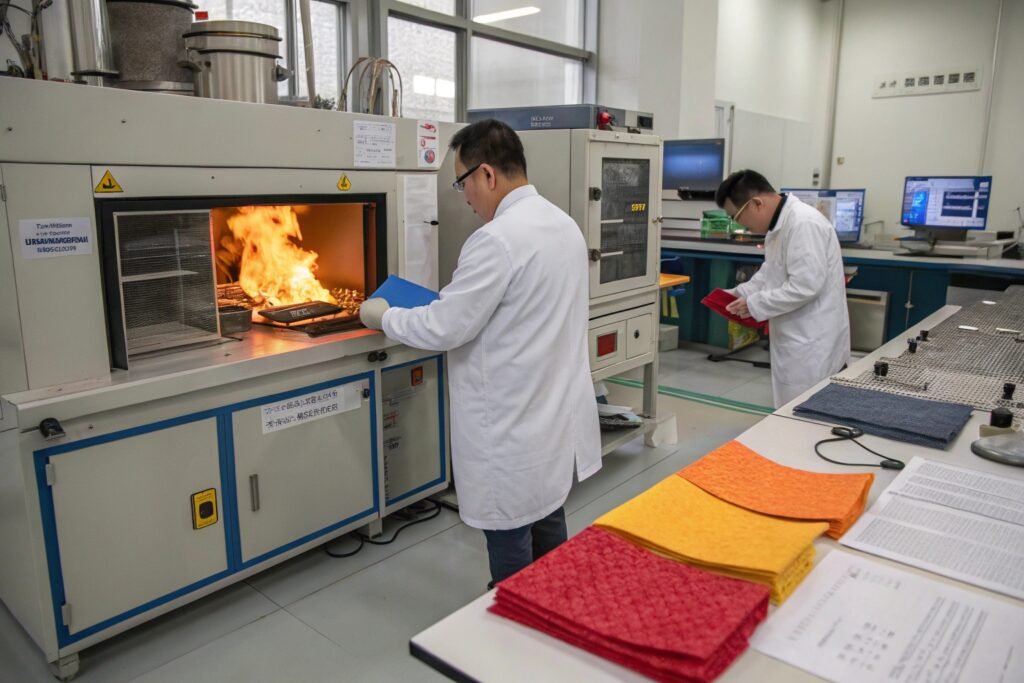
How Is NRC Tested for Fabric Panels?
The Noise Reduction Coefficient (NRC) is calculated using ISO 354 or ASTM C423, measuring the average absorption at different frequencies. Fabric alone doesn’t absorb sound, but it should not hinder the panel's ability to do so.
We offer test reports from third-party labs like SGS or Intertek upon request. Learn more about NRC standards at Acoustical Surfaces.
What Flame Retardant Standards Should the Fabric Meet?
Flammability is critical, especially in public spaces. Fabrics for acoustic panels should comply with standards like:
- NFPA 701 (US)
- EN 13501-1 (EU)
- GB 8624 (China)
Our fire-rated acoustic textiles are tested using vertical flame test methods, and we offer Trevira CS as a halogen-free option. Firetect offers helpful resources on textile flame retardants.
How to Choose the Right Acoustic Fabric Supplier?
Sourcing acoustic fabric is not just about color and texture. You need a supplier who understands performance metrics, test standards, and export logistics. That’s where our Keqiao-based infrastructure offers unique advantages.
At Fumao Fabric, we provide custom-developed sound-absorbing fabrics along with real-time QR-code test reports, fast sampling, and international shipping support.
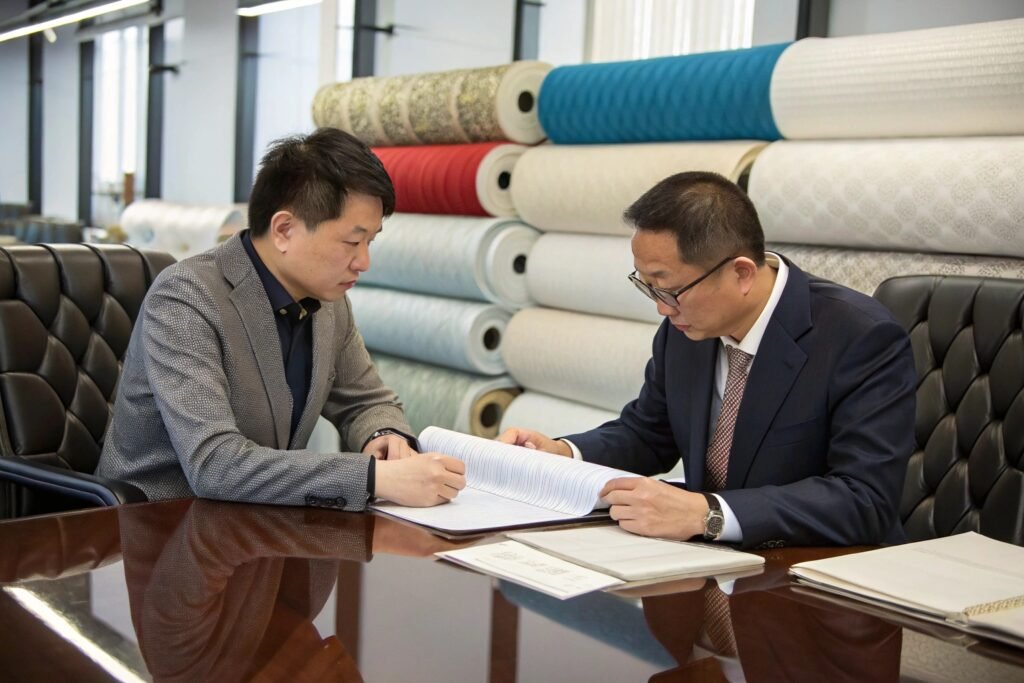
What Should Buyers Look for in Acoustic Fabric Quotes?
Request details on:
- Yarn content and count
- Weave structure and air permeability
- Flame-retardant treatments
- Colorfastness (ISO 105)
- Acoustic test data (ISO 354, ASTM)
Also, check if MOQ aligns with your project scale. We support small-batch customization for designers and bulk orders for hospitality chains. Architizer has a helpful guide on spec’ing acoustic fabrics.
Can Custom Acoustic Fabric Be Branded or Patterned?
Yes. We offer digital sublimation printing on polyester acoustic mesh and custom embossing on velvet or wool. These value-added finishes retain acoustic properties while matching your brand’s visual theme.
Buyers from architectural firms to podcast studios use our eco-functional coated fabrics for branding. See examples from Fabricmate Systems on modular acoustic wall solutions.
Conclusion
Acoustic fabrics must be more than beautiful—they must be functional, test-compliant, and acoustically transparent. At Fumao Fabric, we merge technical textile expertise with global export experience, offering sound-absorbing fabrics tailored for performance and aesthetics. If you're planning your next noise-control project, let's get the fabric right from the start.

